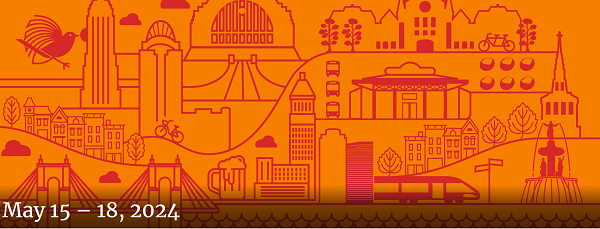
The congress focus this year is restorative urbanism.
The Charter calls for the restoration of existing urban centers and towns within a coherent regional structure. Recognising the complexity of this challenge, a practice of restorative urbanism heals the past harms inflicted on the built environment, natural landscape, social condition, and economic opportunity. After thirty years of New Urbanism, we have moved the needle on the practice of urban development, yet our cities, towns, suburbs, single-use districts, and public realms are clearly still in need of restoration. As the host city for CNU 32, Cincinnati and its broader region offers an exciting opportunity to discover new and innovative solutions to this need.
Restorative urbanism is context-sensitive, focusing design and policy interventions on the continued threat of sprawling development, turning our built environment towards a more sustainable, prosperous future. A practice of restorative urbanism centers on evolution, recognising that cities and towns are never “complete,” and that we must constantly work to improve our built legacy – with what we know and as we continue to learn – in service of foundational principles of New Urbanism. In particular, the Charter points to three key ideas:
- 4. Development patterns should not blur or eradicate the edges of the metropolis. Infill development within existing urban areas conserves environmental resources, economic investment, and social fabric, while reclaiming marginal and abandoned areas. Metropolitan regions should develop strategies to encourage such infill development over peripheral expansion.
- 10. The neighborhood, the district, and the corridor are the essential elements of development and redevelopment in the metropolis. They form identifiable areas that encourage citizens to take responsibility for their maintenance and evolution.
- 27. Preservation and renewal of historic buildings, districts, and landscapes affirm the continuity and evolution of urban society.
As we seek an urbanism that is restorative, we must be mindful not to base that restoration on an idealised past without properly recognising that the past performance of urbanism was reliant on the burdens borne by entire groups of people. So many of these groups continue to bear lasting economic, social, and environmental legacy of these discriminatory burdens, including those inflicted through red lining, malinvestment, urban renewal, de facto segregation, and other harms. Restorative urbanism is the opposite of consumptive urbanism. Before urbanism can be sustainable, it must be stable and supportive. In many communities and especially communities of colour, foundational work is necessary before capacity for growth can be increased. As we investigate the ways that the New Urbanism can improve our practice of restoring existing urban centers and towns within a coherent regional structure, we must recognise the legacies that we do so within.